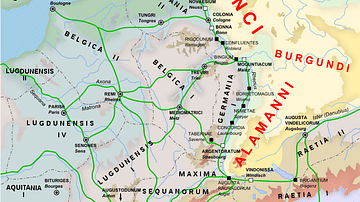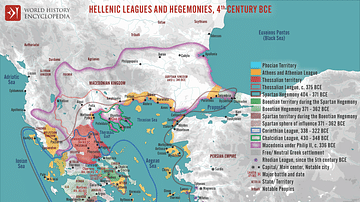Illustration
A map illustrating the establishment of the pilgrimage ('pilgrim' comes from the Latin word peregrinus - a stranger, someone on a journey) to holy places after Roman Emperor Constantine’s conversion to Christianity in 313 CE. The idea of sacred places and buildings was brought into the new faith from Roman and Greek pagan traditions, and a concept of a 'Holy Land' emerged that offered an added earthly dimension to spiritual experience. The further growth of cults of the saints and martyrs was crucial in developing place-orientated pilgrimage as the saints' perceived continuous presence through their relics drew pilgrims and helped establish new sacred geography in the Holy Land and across Christendom. Although such journeys were demanding in time and resources and would often throw the pilgrim into physical and moral dangers, pilgrimages to places of veneration and holy relics continued to flourish in the centuries to follow.
About the Author
Cite This Work
APA Style
Netchev, S. (2022, June 15). Early Christian Pilgrimage (4th-5th Century). World History Encyclopedia. Retrieved from https://www.worldhistory.org/image/16025/early-christian-pilgrimage-4th-5th-century/
Chicago Style
Netchev, Simeon. "Early Christian Pilgrimage (4th-5th Century)." World History Encyclopedia. Last modified June 15, 2022. https://www.worldhistory.org/image/16025/early-christian-pilgrimage-4th-5th-century/.
MLA Style
Netchev, Simeon. "Early Christian Pilgrimage (4th-5th Century)." World History Encyclopedia. World History Encyclopedia, 15 Jun 2022, https://www.worldhistory.org/image/16025/early-christian-pilgrimage-4th-5th-century/. Web. 05 May 2025.








